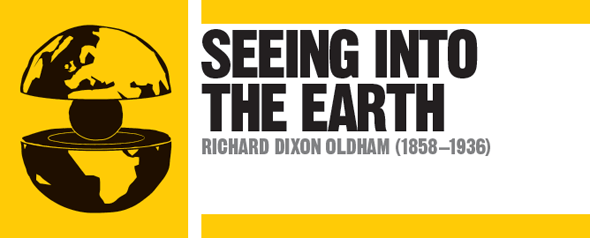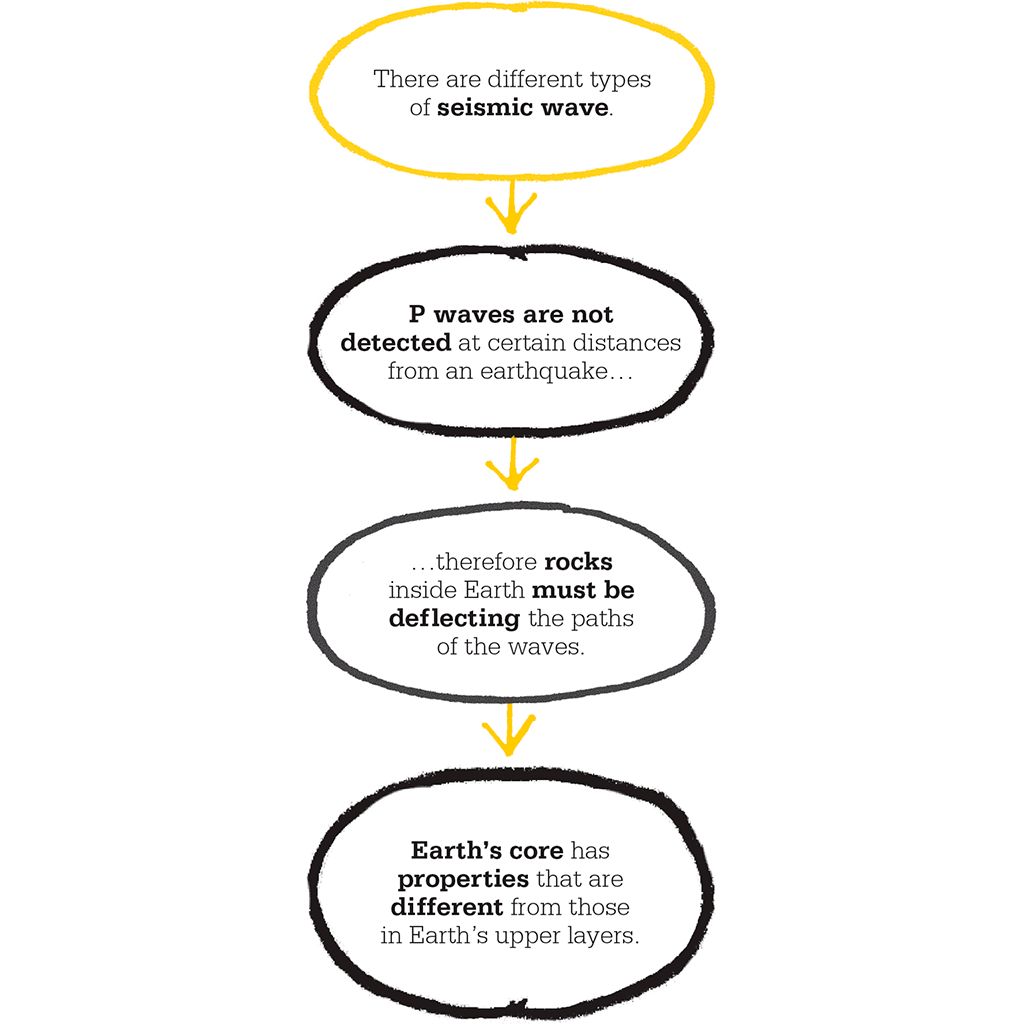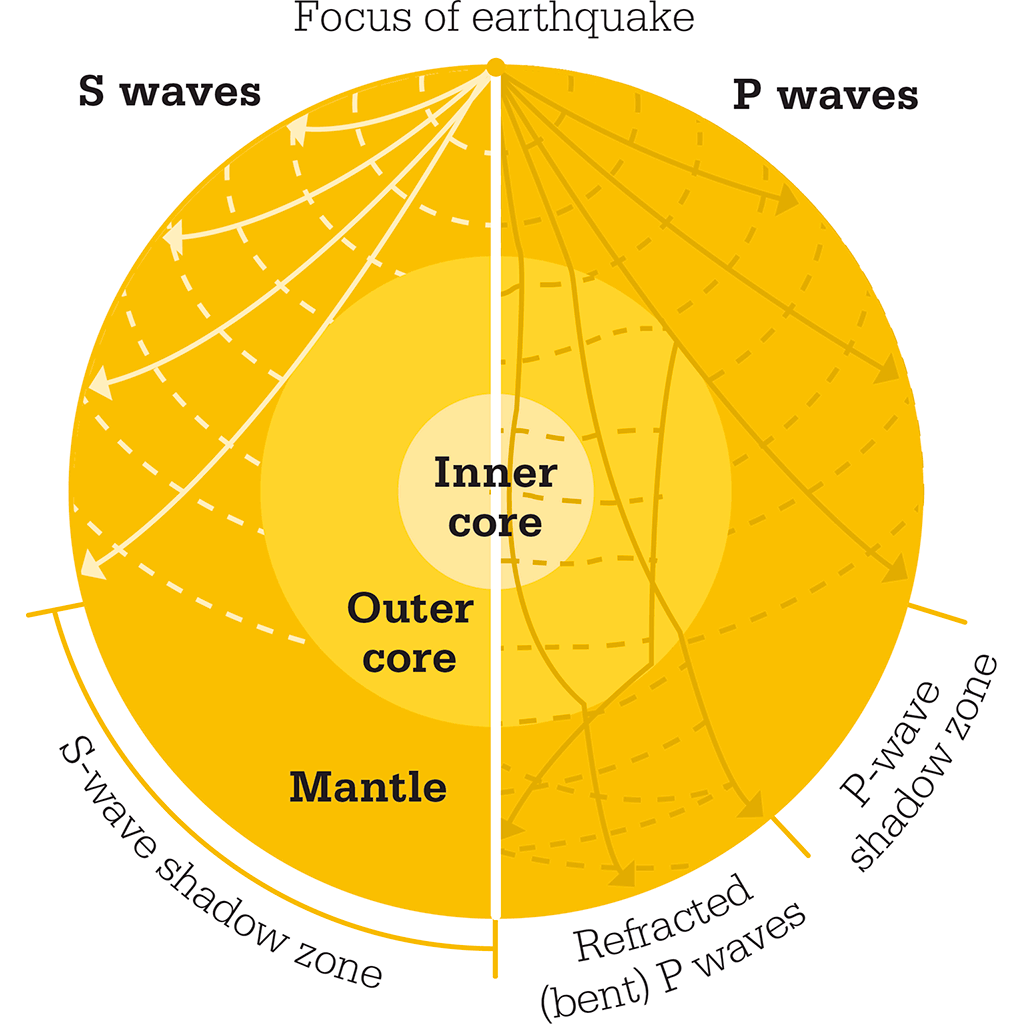
IN CONTEXT
Geology
1798 Henry Cavendish publishes his calculations of the density of Earth. The value is greater than the density of the surface rocks, showing that Earth must contain denser materials.
1880 British geologist John Milne invents the modern seismograph.
1887 Britain’s Royal Society funds 20 earthquake observatories worldwide.
1909 Croatian seismologist Andrija Mohorovicic identifies the seismic boundary between Earth’s crust and the mantle.
1926 Harold Jeffreys claims that the core of Earth is liquid.
1936 Inge Lehmann argues that Earth has a solid inner core and a molten outer core.
The shaking caused by earthquakes spreads out in the form of seismic waves, which we can detect using seismographs. While working for the Geological Survey of India between 1879 and 1903, Richard Dixon Oldham wrote a survey of an earthquake that struck Assam in 1897. In it he made his greatest contribution to plate tectonic theory. Oldham noted that the quake had three phases of motion, which he took to represent three different types of wave. Two of these were “body” waves, which travelled through Earth. The third type was a wave that travelled around the surface of Earth.

Wave effects
The body waves Oldham identified are today known as P waves and S waves (primary and secondary – the order in which they arrive at a seismograph). P waves are longitudinal waves; as the wave passes, rocks are moved backwards and forwards in the same direction as the waves are travelling. S waves are transverse waves (like the waves on the surface of water); the rocks are moved sideways to the direction of the wave. P waves travel faster than S waves, and can travel through solids, liquids, or gases. S waves can travel only through solid materials.
Shadow zones
Later, Oldham studied seismograph records for many earthquakes around the world, and noticed that there was a P-wave “shadow zone” extending partway around Earth from the earthquake location. Hardly any P waves from an earthquake were detected in this zone. Oldham knew that the speed at which seismic waves travel inside Earth depends on the density of the rocks. He concluded that properties of the rocks change with depth, and the resulting changes in speed cause refraction (the waves followed curved paths). The shadow zone is therefore caused by a sudden change in the properties of rocks deep within Earth.
Today, we know that there is a much larger shadow zone for S waves, which extends across most of the hemisphere opposite the focus of the earthquake. This indicates an Earth interior that has very different properties from those of the mantle. In 1926, American geophysicist Harold Jeffreys used this evidence from S waves to suggest that Earth’s core is liquid, as S waves cannot pass through liquids. The P-wave shadow zone is not completely “shadowed”, as some P waves are detected there. In 1936, Danish seismologist Inge Lehmann interpreted these P waves as reflections from an inner, solid core. This is the model of Earth we use today: a solid inner core surrounded by liquid, then the mantle with crustal rocks on top.
"The seismograph, recording the unfelt motion of distant earthquakes, enables us to see into the earth and determine its nature."
Richard Dixon Oldham

This model of an earthquake shows seismic waves passing through Earth and the “shadow zones” of the primary (P) waves and secondary (S) waves.
RICHARD DIXON OLDHAM
Born in Dublin in 1858, the son of the superintendent of the Geological Survey of India (GSI), Richard Dixon Oldham studied at the Royal School of Mines, before himself joining the GSI and becoming superintendent in his turn.
The GSI’s main work involved mapping the rock strata, but it also compiled detailed reports on earthquakes in India, and it is for this aspect of his work that Oldham is best known. He retired on health grounds in 1903 and returned to the United Kingdom, publishing his ideas about Earth’s core in 1906. He was awarded the Lyell Medal by the Geological Society of London, and was made a Fellow of the Royal Society.
Key works
1899 Report of the Great Earthquake of 12th June 1897
1900 On the Propagation of Earthquake Motion to Great Distances
1906 The Constitution of the Interior of the Earth
See also: James Hutton • Nevil Maskelyne • Alfred Wegener